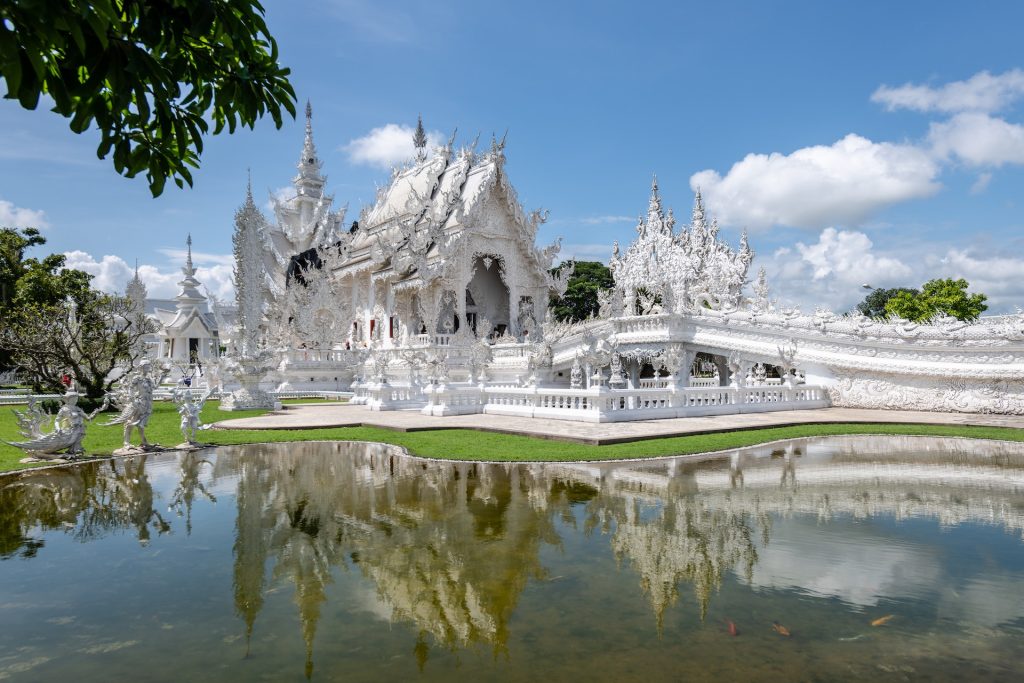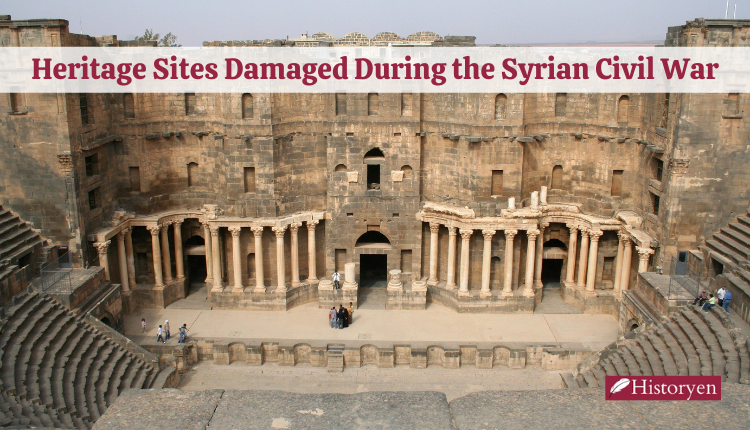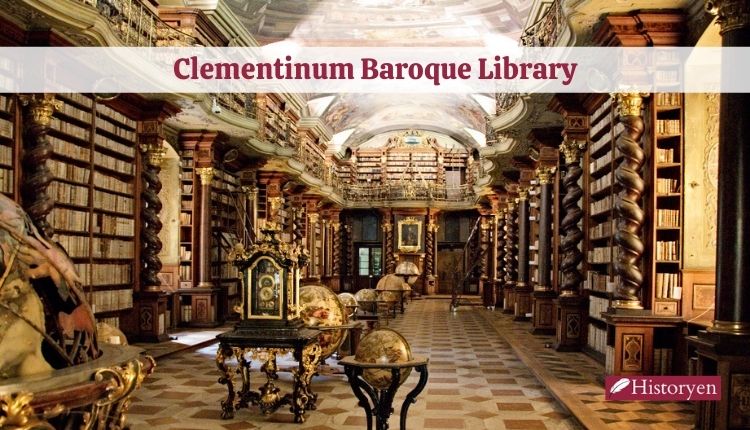Exploring the Magnificence of Modern Temples
In a world where architectural wonders blend with spiritual devotion, modern temples stand as captivating testaments to human creativity and reverence. These sacred structures, adorned with intricate designs and profound symbolism, beckon visitors to immerse themselves in the realm of spirituality while marveling at their awe-inspiring beauty. From the resplendent Sagrada Família in Barcelona to the serene Baháʼí House of Worship in Wilmette, this article takes you on a journey to explore the wonders and stories woven into the fabric of these modern temples. Prepare to be enchanted by their grace, inspired by their design, and awestruck by their significance. Join us as we delve into the realms of architectural marvels and divine tranquility in the realm of modern temples.
The Lotus Temple: A Marvel of 27 Marble ‘Petals’
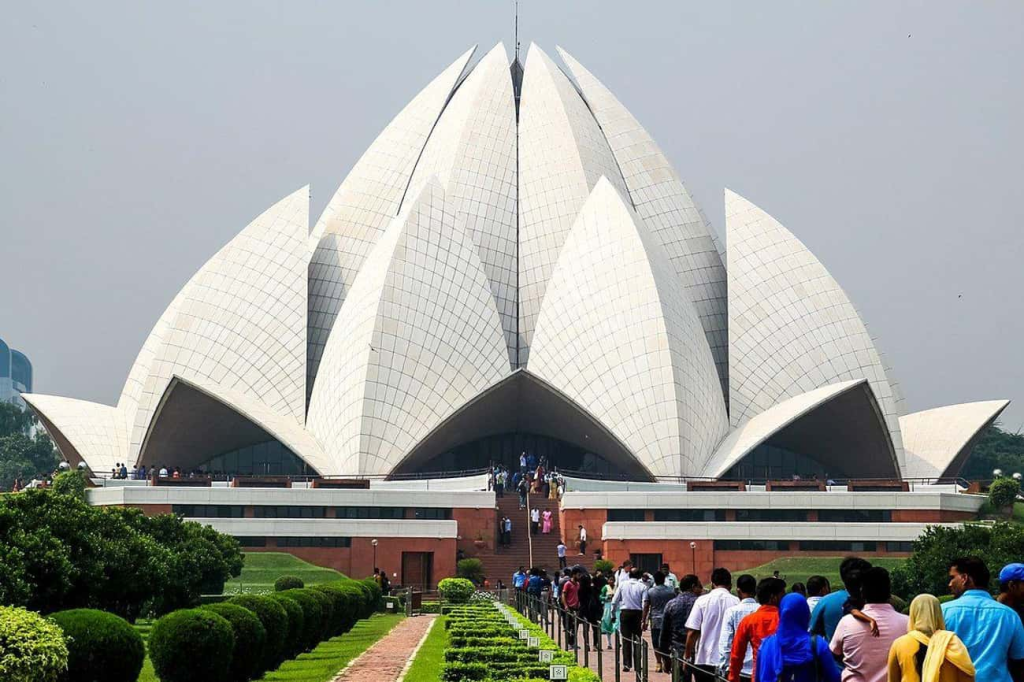
When the Lotus Temple was unveiled to the public in 1986, it generated tremendous buzz. The stunning floral design of this building earned it numerous architectural awards.
The Symbolism of Nine in the Lotus Temple
The Lotus Temple, as a Bahāʾī house of worship, holds great significance. It was constructed to emphasize the number nine, which is sacred to the Bahāʾī religion. The temple features nine pools surrounded by walkways, 27 petals grouped in sets of three to form nine sides, and canopies adorning each of the nine entrances. Although the temple’s top appears open, it actually has a glass roof that illuminates the interior on sunny days.
Wat Rong Khun: Sparkling Sunlight Reflected by Glass-Infused Plaster
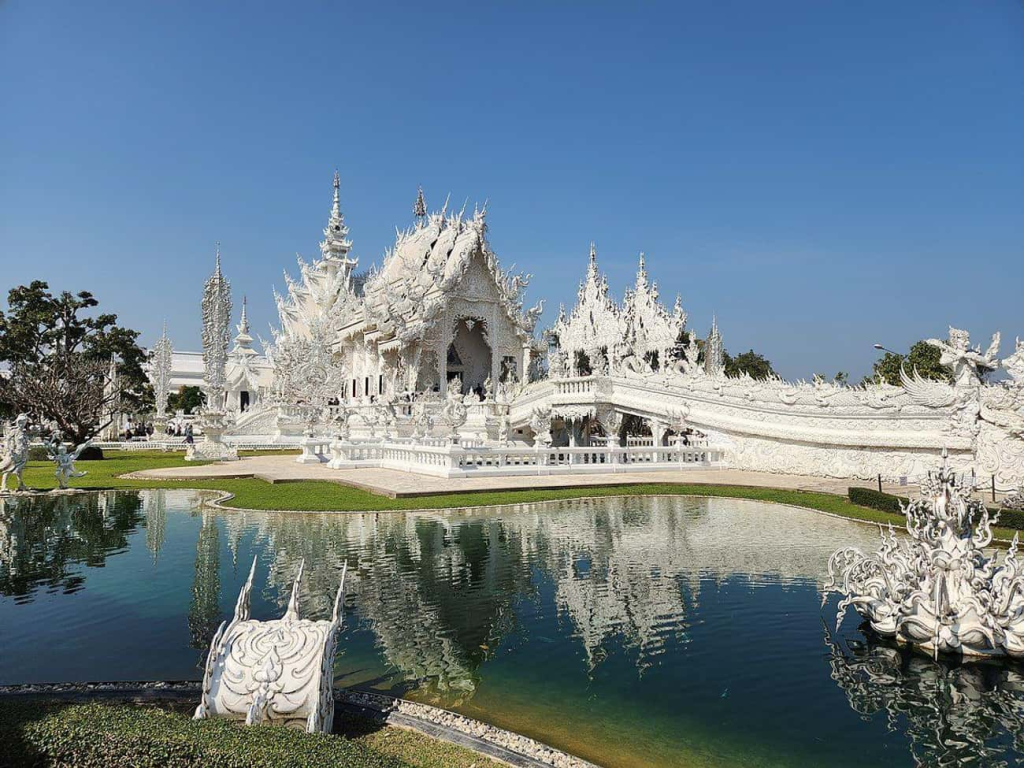
Commonly known as “the White Temple,” Wat Rong Khun in Chiang Rai, Thailand, captivates with its white façade, creating a striking contrast against the surrounding blue sky and green pond.
The Shimmering Beauty of Wat Rong Khun
On sunny days, Wat Rong Khun seems to shimmer magically. This effect is achieved by embedding glass pieces into the plaster, which reflect the sun’s rays. The color choice of white holds deep symbolism, representing the purity of the Buddha, while the embedded glass signifies wisdom. Construction on the temple began in 1997 and concluded in 2008.
Paro Taktsang: A Sacred Hike to Reach Spiritual Heights
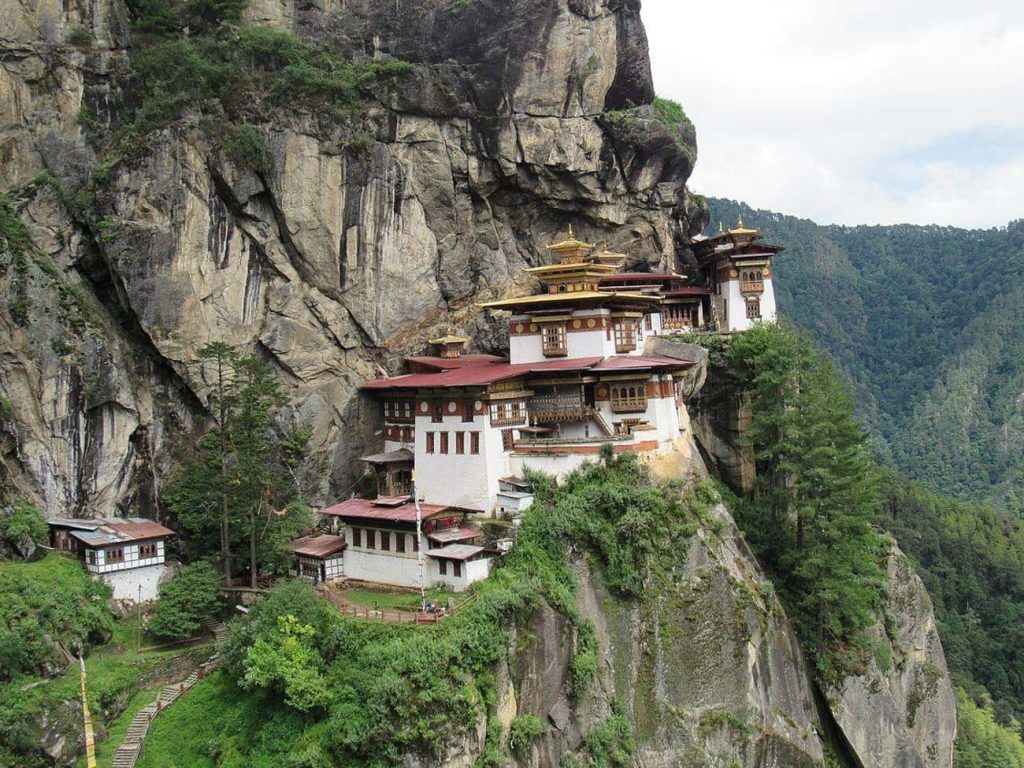
Paro Taktsang holds immense sacred significance for the Buddhist religion. Legend has it that in the 700s, Guru Padmasmbhava meditated in a cave on this cliffside in modern-day Bhutan for three years, three months, three weeks, and three days. According to the tales, Guru Padmasmbhava arrived at the site atop a flying tiger, making his journey much more effortless than that of present-day visitors.
The Trek to Paro Taktsang
To reach Paro Taktsang, intrepid adventurers embark on a challenging two-hour hike, ascending switchbacks that climb over 13,000 feet from the valley bottom, already situated at an altitude of 7,000 feet. Despite the strenuous journey, climbers are rewarded with breathtaking views of the valley and cascading waterfalls along the way.
The Batu Caves: A Colorful Ascent to the Divine
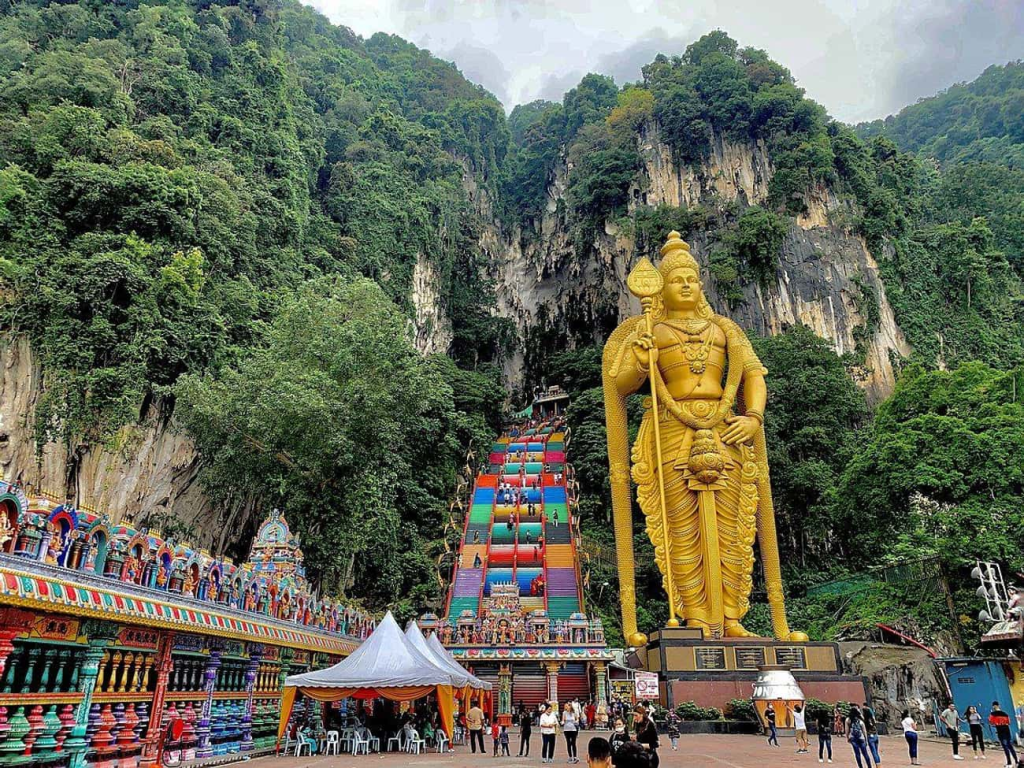
The Batu Caves, located in Malaysia, offer a temple experience like no other. Selected as a temple site in 1891 due to its resemblance to the tip of the deity Murugan’s spear, the caves have since become a renowned annual festival destination, attracting hundreds of thousands of devotees.
Vibrant Stairs of the Batu Caves
Upon arriving at the caves, a mere 30-minute journey from Kuala Lumpur, visitors are greeted by a majestic 140-foot-tall gold-painted statue of Murugan. Ascending the 272 steps leads to the entrance of the first cave. In 2018, the steps were transformed into a vibrant spectacle, painted in bright colors that resemble a rainbow when viewed from the base.
The Sagrada Família: A Monumental Work in Progress
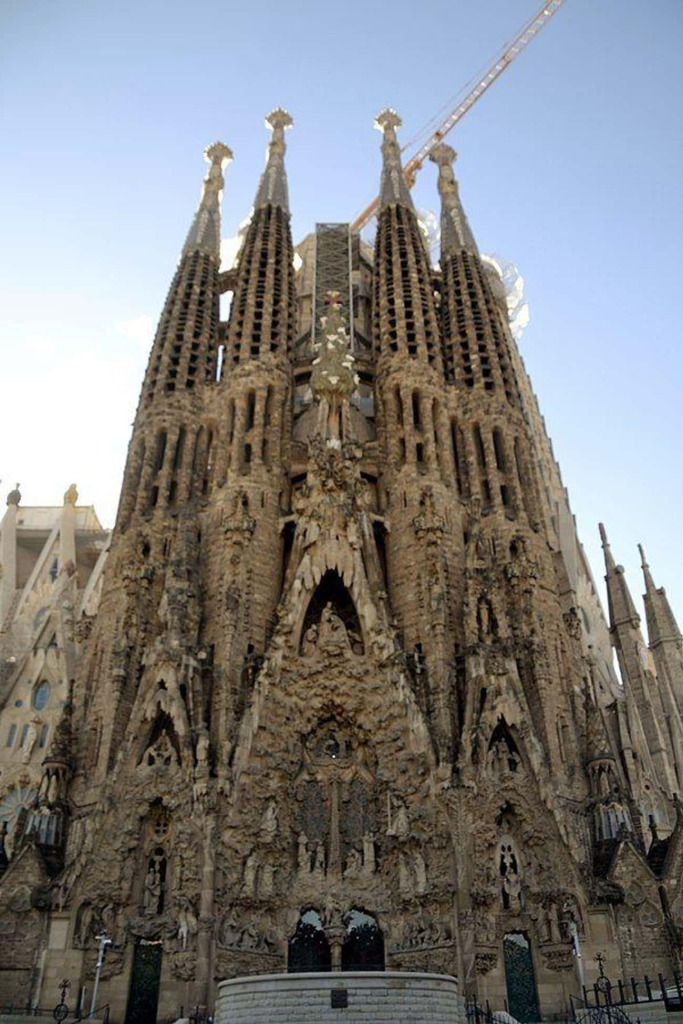
The Sagrada Família has earned its reputation as the “longest modern construction project.” This basilica, situated in Barcelona, Spain, has been under construction for over 140 years.
The Extraordinary Complexity of the Sagrada Família
The prolonged construction period of the Sagrada Família can be attributed to its intricate and unique architecture, meticulously designed by the original architect, Antoni Gaudí. The building is filled with symbolism, boasting a blend of architectural styles. Delays in construction were further exacerbated by the impact of the COVID-19 pandemic and decreased tourist revenue, which funds the project. Previously expected to be completed in 2026, the revised completion date remains uncertain.
Baháʼí House of Worship: A Cherished Landmark in Wilmette, IL
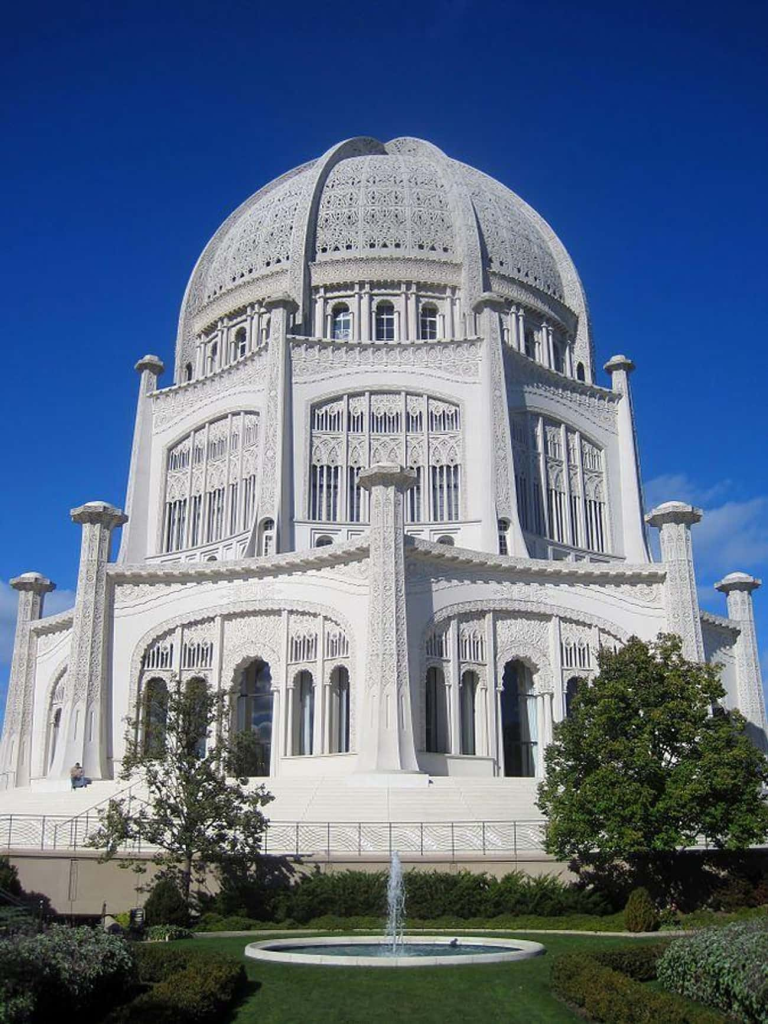
The Bahá’í religion, founded in the 1840s in the Middle East, encompasses only nine Bahá’í houses of worship worldwide. The oldest among them, located in Wilmette, IL, a suburb of Chicago, stands on the shores of Lake Michigan and was completed in 1953.
The Unity Symbolism of the Baháʼí House of Worship
Bahá’í houses of worship embrace the sacredness of the number nine, representing unity. Accordingly, these temples are designed with nine sides, nine entrances, and nine verses above the doors. Though constructed from concrete, the unique process employed by the head carver reveals the smaller pebbles within the concrete mix, lending the building a refined appearance uncommon among concrete structures.
The Somnath Temple: A Testament to Resilience
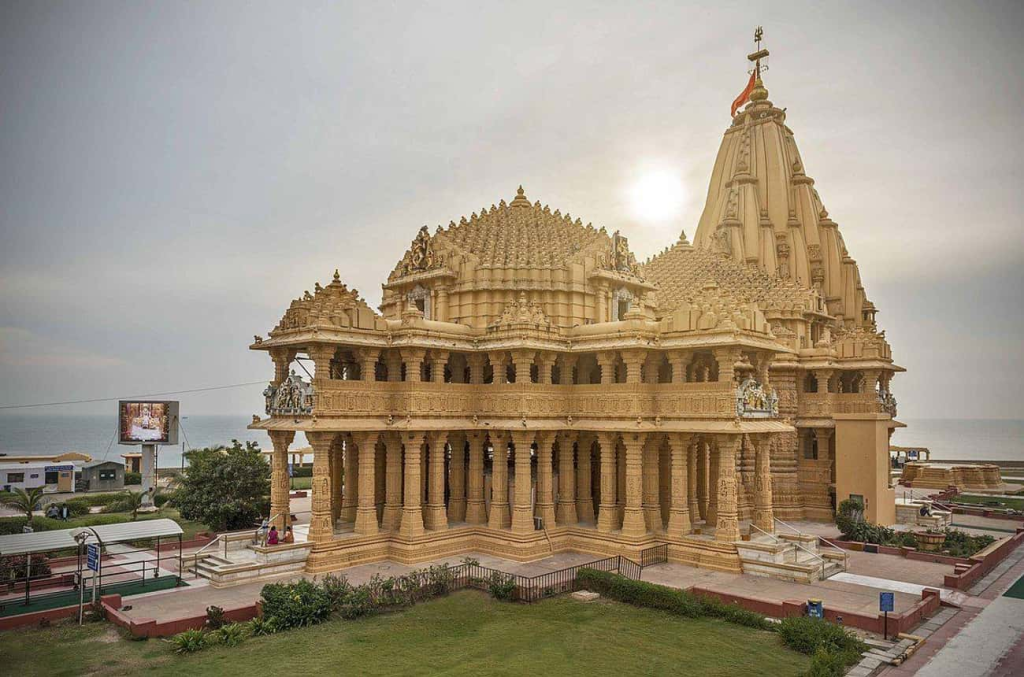
The Shree Somnath Jyotirlinga Temple, currently standing since 1951, carries a history spanning over 2,600 years.
Destruction and Reconstruction of the Somnath Temple
The original temple was built around 649 BCE, at the very place where the first of the twelve holy jyotirlingas emerged in India. Throughout its existence, the temple endured destruction and subsequent reconstruction multiple times. In 1024, Mahmud of Ghazni plundered and burnt the temple, resulting in a fierce two-day battle claiming the lives of approximately 70,000 people. The temple underwent three more cycles of rebuilding and destruction before remaining vacant until its current reconstruction in the 1950s. Visitors today can enjoy an enchanting sound and light show that illuminates the temple at 7:45 pm.
Swaminarayan Akshardham: A Marvel Beyond Borders
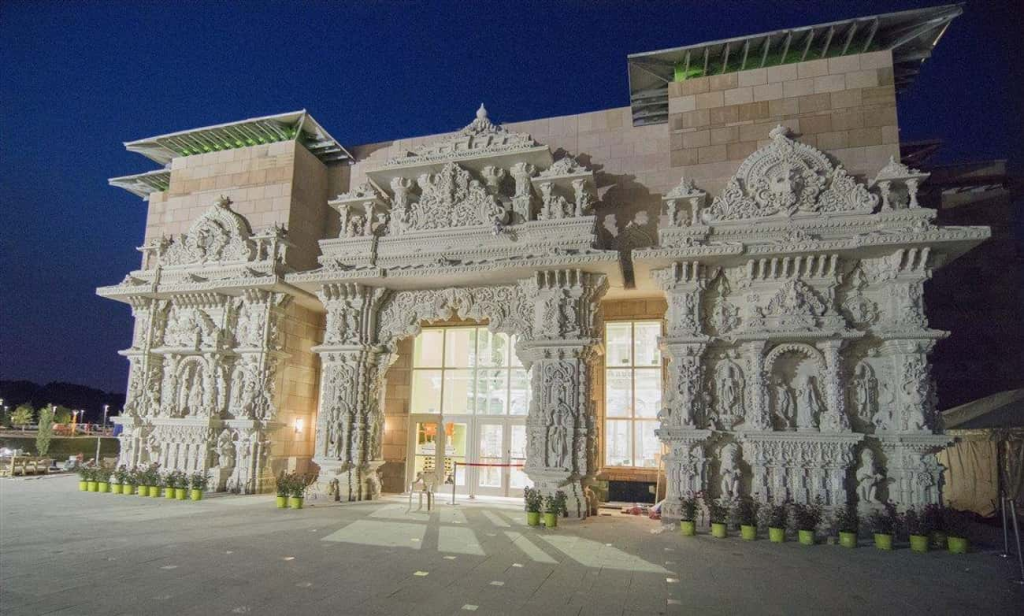
Contrary to expectations, the world’s largest Hindu temple outside of India is nestled in Robbinsville, NJ, a city with a population of 15,000.
Splendor in Robbinsville, NJ – Swaminarayan Akshardham
The construction of Swaminarayan Akshardham commenced in 2010, following its proposal in 1997. Over the years, construction workers and volunteers utilized 68,000 cubic feet of Italian Carrara marble to complete the temple. Skilled artisans in India meticulously carved the temple’s various animals and ornamental elements from the imported marble. Encompassing a vast 162-acre complex, Swaminarayan Akshardham stands as a testament to architectural grandeur.
The Sheikh Zayed Grand Mosque: A Monument of Opulence
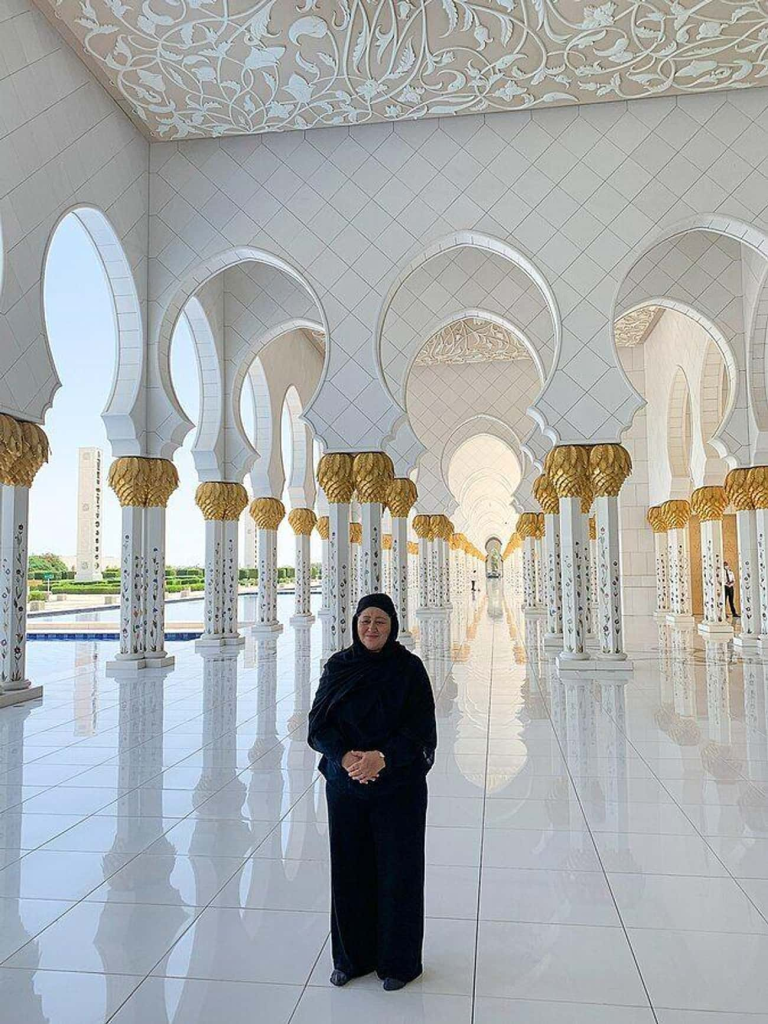
The Sheikh Zayed Grand Mosque, completed in 2008 after 12 years of construction, has emerged as one of the world’s most renowned landmarks. Situated in Abu Dhabi, the mosque welcomes millions of visitors annually.
Magnificence in Abu Dhabi
The Sheikh Zayed Grand Mosque enthralls visitors for numerous reasons. As the world’s third-largest mosque, it spans 22,000 square meters, equivalent to the size of four football fields, and can accommodate 40,000 worshippers. The mosque boasts various superlatives, including the world’s largest chandelier and largest carpet. Its construction necessitated over 30 million marble pieces, with an estimated cost exceeding half a billion dollars. The mosque was named in honor of Sheikh Zayed bin Sultan Al Nahyan, the first president of the United Arab Emirates, who rests in the mosque’s courtyard since 2004.
Kinkakuji: Resilience in Gold
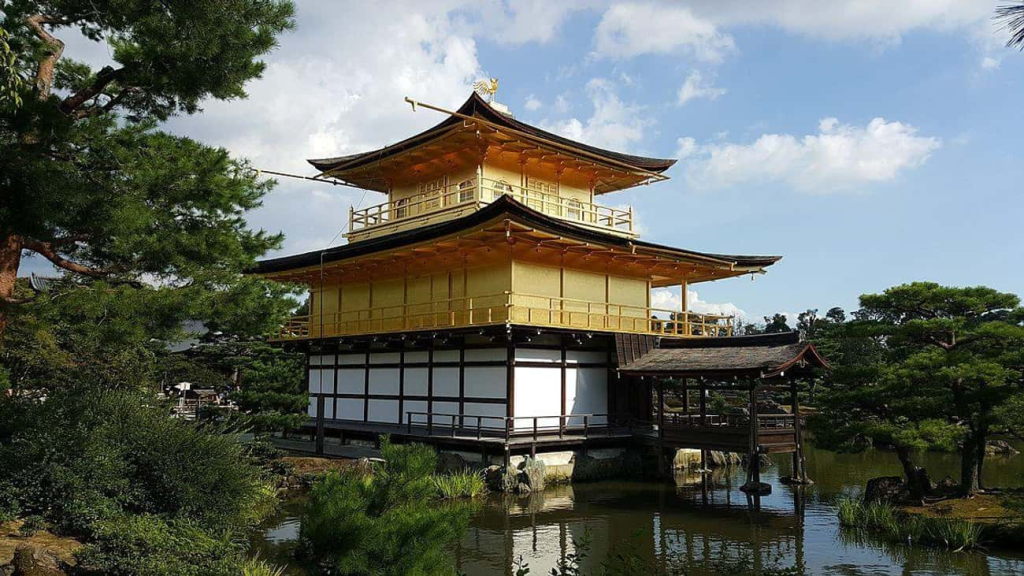
Kinkakuji, situated in Kyoto, Japan, has undergone multiple reconstructions throughout its history. The original temple, built in the late 1300s, fell victim to fires during a civil war. Subsequently, in 1950, a disgruntled monk ignited the temple, leading to its destruction. The present structure, replicating the original design, was erected in 1955.
Gilded Elegance of Kinkakuji
The three floors of Kinkakuji exemplify distinct architectural styles. The first floor resembles a traditional Japanese palace, featuring natural wood beams and stark white plaster walls. As you ascend, the second floor reflects the design elements found in samurai residences. The pinnacle of the temple replicates a Chinese Zen Hall, entirely covered in resplendent gold leaf. Atop the temple, a golden phoenix majestically perches, captivating all who visit.
Concluding Remarks
The allure of modern temples lies not only in their architectural splendor but also in the rich history and cultural significance they embody. Each temple showcased in this article possesses unique features that capture the imagination and inspire awe. From the Lotus Temple’s floral elegance to the shimmering brilliance of Wat Rong Khun, these temples stand as testaments to human creativity and devotion. Whether through arduous hikes to reach Paro Taktsang or the vibrant rainbow staircase at Batu Caves, these temples beckon visitors to explore their beauty and uncover the stories engraved within their walls. As the Sagrada Família continues to captivate with its intricacies, the Bahá’í House of Worship promotes unity and spirituality. The enduring resilience of the Somnath Temple, the grandeur of Swaminarayan Akshardham, and the opulence of the Sheikh Zayed Grand Mosque leave indelible impressions. Lastly, Kinkakuji’s golden splendor encapsulates the harmonious fusion of architectural styles. These modern temples provide glimpses into diverse cultures and offer sanctuaries where visitors can witness history, marvel at architectural prowess, and find solace in the realm of spirituality.
